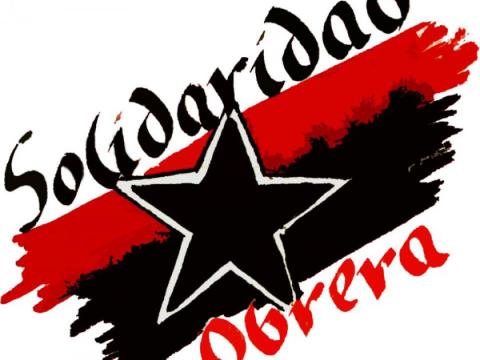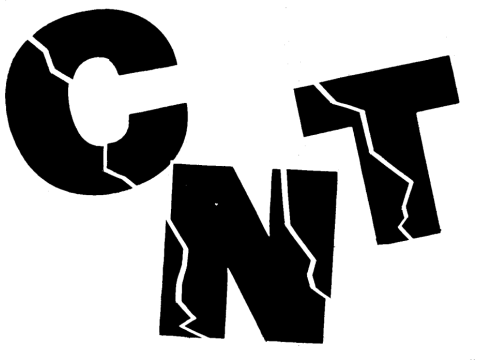2004 opinion and assessment of the CGT in Spain by a Canadian anarchist, with which we do not agree but reproduce here for reference and discussion.

by Larry Gambone
I was well received by the International Relations representative of the CGT, (Confederacion General de Trabajo) Angel Bosqued. At first he thought I might be a member of NEFAC as they had recently done a tour of Europe, but I explained that I was only representing myself. We talked for about an hour and I learned a great deal about the history and practices of the CGT. I told him that people in the English-speaking world know almost nothing about contemporary Spanish anarcho-syndicalism and I, in my small way, would do what ever was possible to change that situation. He gave me a pile of CGT literature and took me on a tour of the Barcelona CGT headquarters.
The headquarters was very impressive, consisting of the top floors of a ten or eleven story building. Each of the individual industrial unions, such as teachers, metal workers or communications workers, has its own office. There are several larger meeting rooms, offices of the Salvador Segui Foundation (a CGT cultural grouping) and a bar-cafeteria with a tiled outdoor lounging area. This has a wonderful view of Barcelona as it is on the ninth floor. Next we went to the archives and library that comprised much of the tenth floor. The library alone consists of some 10,000 volumes on anarchism, syndicalism and related topics.
Now the CGT is not some tiny anarchist sect with a dozen members, but is the representative of some one million workers. The Confederation is found in every corner of Spain, and is in fact, the third largest trade union grouping, only exceeded by the Socialist UGT and the Communist CCOO. The CGT is strong among bank workers, television, postal and hotel workers, but also has support among teachers, chemical workers, graphic artists, and cleaning workers.
The Confederation is composed of two basic structures, geographical and industrial. At the base lies the local union which is autonomous. Where there are 75 or more members in a vicinity they can form a union local which is open to all trades. Locals federate together at the city level, or where the city is very large, at the district level. These in turn, federate at the provincial level. The provincial federations confederate at the territorial level, Spain being made up of Catalunia, Euskadi, Astrurias, Castile, etc. All of these form the national confederation.
When enough members are organized in an industry they can form an industrial branch. These industrial branches federate, for example bank workers have a federation for each of the major banks. The next level, is like a regular industrial union. For example, bank workers belong to the Federation of Bank, Credit and Office Workers. The territorial confederation and the industrial union federations form a Confederal Commitee. There is an annual general meeting of the CGT as well. It must be emphasized that the union operates from the bottom-up and members are not controlled by the confederal level.
How does the CGT differ from the usual far-left groupings and regular trade unions? First of all, they do not think they have all the answers, or the answers they do have are written in stone for all eternity. As they state in their Agenda Confederal 2004, "Anarchism is not a closed or final doctrine, it expresses ideas that could appear contradictory; radical pacifism, or the justification of violent acts as social protest, extreme individualism and membership in syndicalist unions, absolute rejection of institutions and limited participation in them. Anarchism is characterized by its confidence in individual liberty and in the capacity to judge and act..."
Rather than forcing dogmas down people's throats they actually listen to working people and the union gives workers what they want, not what intellectuals think they ought to want. I think much of the CGT's success is to be found here. Their direct-democratic structure allows the membership and not bureaucrats to control the union. While not pushing dogmas, they promote a vision of society, an anarchist ethical encompassing individual liberty, autonomy, direct action, self-management and federalism. The union attempts as much as possible in daily life to live by this vision.
While highly critical of all forms of authoritarianism, they do not spend their energy attacking other radical groups. The CGT is a militant union, but you never see the sort of rhetorical radicalism - violent images or shouting about class war - in their press. They eagerly work with other unions which in some manner share their attitudes, attempting to create a global movement of "alternative unionism" and have strong relations with other anarcho-syndicalists such as the Italian USI, the Swedish SAC, and the French CNT-F.
The CGT does not regard itself, or even the working class, as the whole struggle, seeing their union as one part of a broad movement comprising peasant unions, ecologists, cooperatives, women's and community groups. They have good relations with the Zapatistas in Mexico and consider their union to be a member of the Anti-globalisation Movement. "The CGT is an anarcho-syndicalist organization... which acts in the working world. But not all the problems are just in this area, nor are workers unaware of this fact. Thus, syndicalists, anti-authoritarians, pacifists, immigrants, ecologists, movements against sexism and the Anti-Globalisation Movement are in the end one movement, one without `professional revolutionaries' in charge and with the consciousness that the transformation will involve all groups."
The CGT spends much time attacking the wave of so-called privatizations going on in Spain and everywhere else. Many union members are government or social service workers. However, while defending social services and public workers, they do not defend the state or merely tail the statist left. The state is clearly seen as the enemy along with corporate capitalism and the vision of self-management and decentralization is offered as an alternative. Once again in the Agenda Confederal, "Self-management combined with direct democracy, mutual aid and solidarity present the complete and total alternative to the pyramidal, hierarchical, authoritarian and exploitative model of capitalist society incarnated in neoliberal ideology."
A narrow anti-political ideology they consider divisive. Many union members belong to, or vote for political parties, yet in practice are good syndicalists. But at the same time, the CGT never fails to point out the problems inherent in parliamentary politics and parties. Nor does the union have any time for nationalism but the autonomy of union branches and decentralization allows historically oppressed peoples such as the Basques and Catalonians to have their own language publications and federations.
The CGT's success will hopefully rub off on other syndicalists. Already in France the CNT-F has experienced a surge in support, with some 5000 members, compared with a few hundred a decade ago. Syndicalist groups have appeared in the former Stalinist countries, and although small, may experience growth. Orthodox unionism has crumbled in the face of neoconservatism and maybe workers are open to the ideas of autonomous direct action. And since nothing exists in isolation, a rebirth of anarcho-syndicalism will only benefit anarchists of all varieties.
Taken from Infoshop.org






Comments
meh
meh
syndicalist wrote: meh Yeah,
syndicalist
Yeah, same thoughts here, but any English language info on either the modern day CNT or CGT I'm hungry for, so that's why I added it!